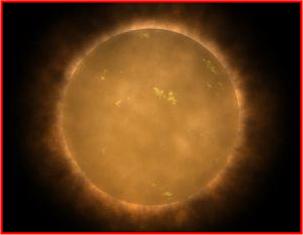If the Internet has been responsible for the spread of human knowledge, it has also been responsible for the spread of misinformation and conspiracy. The Internet is saturated with websites filled with conspiracy theories on everything imaginable to man.
However, Internet conspiracy theories reveal a pattern of people seeking answers to questions almost impossible to resolve. For example, that aliens are here and have been here since Roswell, or that 9/11 was planned by George W. Bush to force a war in the Middle East; and of course, who killed JFK?
These three main conspiracies are far beyond the scope of this editorial to ever prove or disprove any claims made by theorists, but the idea these conspiracies have proliferated on the Internet lends one to believe true information and truth in general—is at risk.
A close friend of mine asked me if I believe aliens are here now, living among us, and have transferred alien technologies to humans resulting in scientific advances in aero-dynamics, communications, and medicine.
I said no, I don’t believe the aliens have landed and transferred advanced technologies to specific governments here on Earth, in order to influence human evolution. Because the thought of some alien power deciding the fate of humanity seems to me to be a little presumptuous.
Let me explain further. There are approximately 200 billion stars in our Milky Way Galaxy and around those stars are vast amounts of undiscovered planets and moons within solar systems similar to our own. The closest star to our sun is Alpha Centauri, the third brightest star in the sky, 4.37 light-years from Earth. Alpha Centauri is actually a three star system containing three suns similar to our own.
In order to reach Alpha Centauri, one would need to travel for 4.37 years at the speed of light i.e., 1,079,252,848.8 kilometres per hour, in order to get there from here. However, no such technology developed by humans presently exists to propel a spacecraft at those speeds. Even at the average speed of the space shuttle 28,300 kph, it would take a spacecraft approximately 165,000 years to reach Alpha Centauri from Earth.
 The Red Dwarf Star Gliese 445
The Red Dwarf Star Gliese 445
Indeed, life formed on Earth; therefore, it is reasonable to believe it has formed elsewhere. Recent discoveries have revealed water is more common in the universe than first thought; and water is essential for life as we know it. There may be a turtle like creature living on a distant earth-like planet somewhere, but whether or not that creature has developed advanced mathematics and engineering to the degree where they can fly, using advanced aero-dynamics through interstellar space, is a bit of a stretch.
Even though mankind's cumulative knowledge is increasing 100 per cent every 16 months, science and technology here on Earth will need another century or two to develop human interstellar space travel i.e., if human interstellar space travel is even possible. All this rests on whether or not mankind can adapt and survive in an uncertain future.
I believe life exists in abundance in the universe, but life does not mean intelligent life as we know it. Duncan Forgan of the Royal Observatory in Edinburgh, Scotland says “there should be 361 advanced, stable civilizations in the Milky Way.” The question is: At what stage are they in their technological development and socio-economic order? In my opinion, the chances we might relate to their development in some way would be mistaken. Nevertheless, as an Earthling whether you live on an alien planet or planet Earth, an inch is an inch, 2+2 = 4 and E=mc2. Therefore, in the context of 361 advanced possible civilizations in the Milky Way, how many civilisations have possibly developed interstellar space travel? Of course, it’s impossible to know, because there are so many variables and mathematical probabilities. However, the Fermi Paradox originating from physicists Enrico Fermi and Michael H. Hart, helps us understand how complex the question of advanced alien life really is.

 Voyager 1 contains a gold disc with a vast copy of the sights and sounds of Planet Earth, including a map to locate Earth and anatomical descriptions of both the human male and female, along with samples of music such as Chuck Berry, and languages like English and French; in the hope it will one day be found by an advanced alien civilization.
Voyager 1 contains a gold disc with a vast copy of the sights and sounds of Planet Earth, including a map to locate Earth and anatomical descriptions of both the human male and female, along with samples of music such as Chuck Berry, and languages like English and French; in the hope it will one day be found by an advanced alien civilization.
The Fermi Paradox
Our sun is a young star about 4.5 billion years old, but there are billions of other stars in the Milky Way Galaxy that are billions of years older. A few of these stars may have Earth-like planets which, considering Earth as a typical planet, may give birth to intelligent life. From this, we can infer some of these civilizations may develop interstellar space travel, a science humans are still studying. At any practical stage of deep space travel, the entire galaxy could be colonized in ten to twenty million years
So according to the paradox, the Earth should have been colonized by advanced aliens thousands of years ago, or would have most certainly been visited by them. But no convincing evidence exists of this anywhere. Furthermore, there are no confirmed signs of intelligent life anywhere else, neither in our galaxy nor in the more than 100 billion other galaxies in the observable universe. That’s why Fermi's proposition is valid: If aliens exist, then where are they?
In my view, with the relative age of our young universe at only 13.8 billion years old, the idea of Fermi’s Paradox becomes even more credible, because not enough time has passed since the Big Bang for life to form, evolve, and develop interstellar space travel without destroying itself first or experiencing extinction.
But have faith Earthlings, because in 40,000 years Voyager 1 launched in 1977 will travel within 1.6 light-years of Gliese 445, a red dwarf star in the constellation of Camelopardalis, 17.6 light-years from our sun. And in another 296,000 years, Voyager 2 will pass 4.3 light-years from Sirius, the brightest star in the Earth’s sky in the constellation of Canis Major.
Perhaps there we may discover a turtle-like creature whose simple existence and image will force us all to face a humbling new reality, which will forever change the way humanity views itself and its place in creation.


